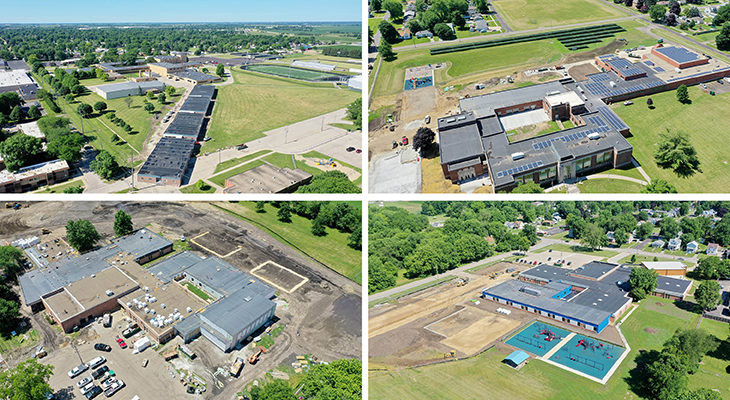
Nearly 400,000 square feet in additions and renovations at four schools pave the way for major improvements in Galesburg Community Unit School District #205
The population of Galesburg, Illinois has experienced a slight decline over the past decade. During that time, Galesburg Community Unit School District #205 had to contend with the upkeep and expenses of aging, inefficient schools, several of which were too large for their student enrollment.
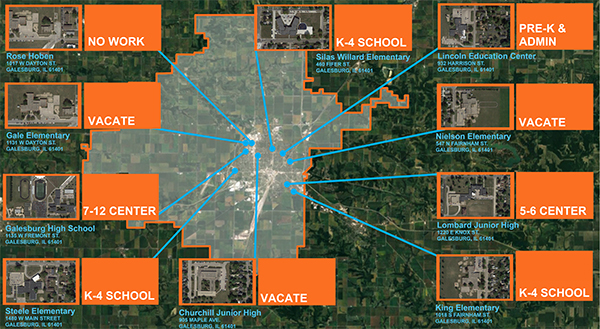
In summer 2018, the district tasked Legat Architects with creating a plan to expand and upgrade some schools so the district can close others. The projects, which continue now, cover more than 388,000 square feet in additions and renovations and add up to more than $50 million in construction. The projects, designed by Legat and built by Russell, including the following:
- Galesburg High School (7th – 12th grades): additions and renovations allow seventh and eighth graders from Lombard Middle School and Churchill Middle School (shuttered junior high) to move to the high school
- Lombard Middle School (5th – 6th grades): additions and renovations transform it into a fifth/sixth grade center (formerly a junior high)
- King Elementary School (K – 4th grade): additions and renovations allow students from two closed elementary schools to move here
- Steele Elementary School (K – 4th grade): additions and renovations allow students from two closed elementary schools to move here
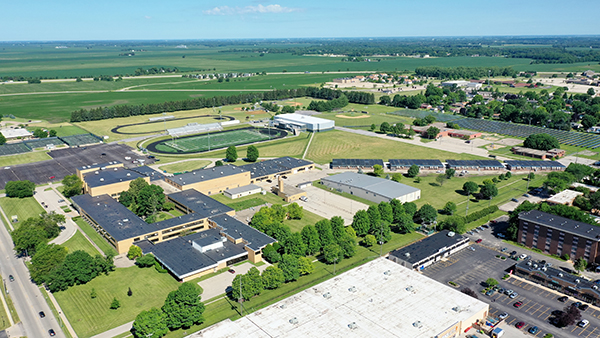
Galesburg High School: Better Use of Space in a Massive Facility
Much has changed since Galesburg High School was built in 1957: The curriculum has expanded and grown more specialized. Enrollment has dipped to about half of the 2,400 students the facility was designed for. Mechanical and electrical systems have deteriorated—the facility still has its original boilers!
After most of the addition/renovation work is done in December 2021, the high school will welcome seventh and eighth graders moving over from two junior highs: Churchill (closing) and Lombard (transformed into middle school). The junior high will move over next summer.
Some stakeholders expressed concern about younger and older students joining within the same facility. The design responds by compartmentalizing:
- A one-story, 18,400-square-foot addition and partial renovation serve 10th through 12th graders.
- The renovated first floor of the 1957 building houses 9th graders and common spaces.
- The modernized second floor of the original building serves 7th through 8th graders.
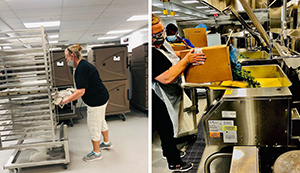
Renovations touch nearly every part of the 300,000-square-foot existing school. A major portion of the work includes all-new, much more efficient mechanical and electrical systems that reduce operations and maintenance costs. Additionally, all corridors get refreshed with new lockers, flooring, and ceilings. The original building gets updated science and art rooms, as well as a renovated cafeteria and production kitchen. The project also brings more special education classrooms and adds more breakout areas for students to gather outside the classrooms.
The 10th through 12th grade expansion now under construction will connect to and occupy the renovated vocational building. Vocational programs will move across the street. The project also includes a band and choir addition, as well as a new 7th grade entry. Click on the image below to take a virtual walkthrough of the Galesburg High School expansion under construction.
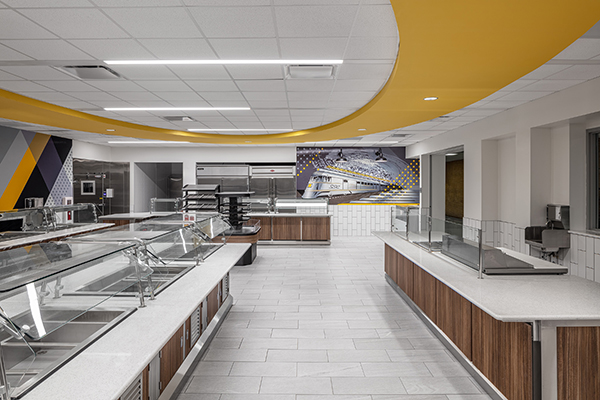
Tracking Galesburg’s History
Galesburg’s railroad roots go deep, so much so that the city was on the Axis powers’ list of World War II bomb sites. The high school team name, the Silver Streaks, refers to a train that ran through the city from 1934 to 1960.
Galesburg CUSD #205 Assistant Superintendent Jennifer Hamm worked with the Legat team to incorporate rail references into the high school design. Legat’s Bryan Archibald said, “During the research and design phases, we constantly referred to the sketches and inspirational images that Jen collected.”
Gestures to this rail history appear throughout the work at the high school, including in the first completed phase: the new servery, renamed the Silver Streak Café, has a wood wall with aluminum reveals that resemble Galesburg’s rail map. Next to the servery, a new production kitchen serves the entire district.
The rail connection also appears in the design of the new 10th – 12th grade wing now under construction. Oval-shaped seating cubbies carved into the walls mimic passenger train windows and light fixtures are based on the tracks in Galesburg.
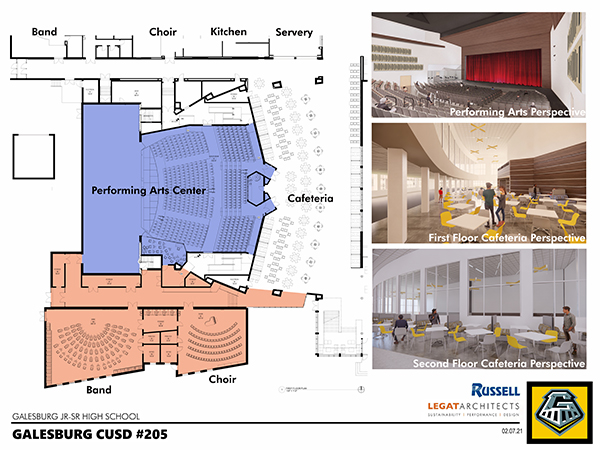
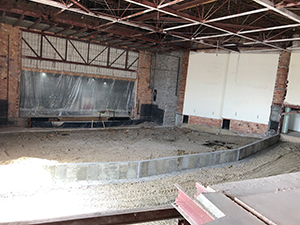
Auditorium Renovation
The third and final phase of the work at Galesburg High School includes an auditorium renovation, as well as a band and choir space addition. Construction is expected to finish in time for student occupancy in spring 2022.
Archibald said, “The auditorium’s original footprint, which had a huge balcony, could seat up 2,200. It was oversized and acoustically problematic. The redesign improves acoustics and reduces the footprint to 625 seats to serve two grade levels.”
The reduced auditorium size opens space for a grade 7 – 8 cafeteria on the second floor and a 9 – 12 cafeteria on the first floor.
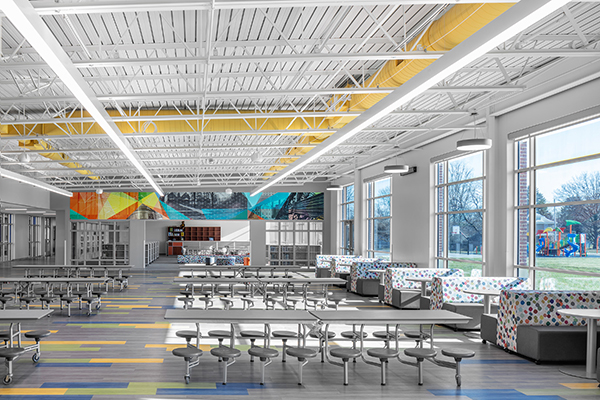
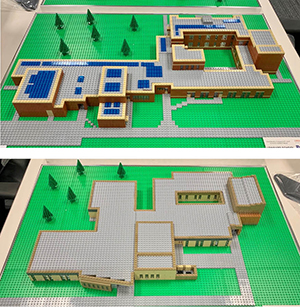
Lombard Middle School: More Light, More Space, More Flexibility
Transforming Lombard Junior High (grades 6 – 8) into Lombard Middle School (grades 5 – 6) required additions and renovations.
The school’s original cafeteria and media center were undersized and had little daylight. The highlight of the 15,000-square-foot expansion is a cafeteria and media center that open to each other via an overhead glass door.
Archibald said, “When the door opens, it creates spillover space for multiple classes, staff meetings, or community events.”
Beside the cafeteria, a new central courtyard with a patio allows students to eat lunch outside and doubles as an outdoor learning area.
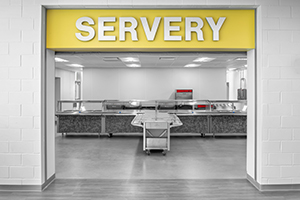
The addition, which improves circulation throughout the first floor, also includes a new a band room. The project also included demolition of a 107-year-old gym that the school stopped using years ago.
More than 20,000 square feet of interior renovations at Lombard create additional space for science and life skills classrooms, including conversion of the old cafeteria into a classroom. Because the high school’s production kitchen now serves the entire district, Lombard’s production kitchen transforms into a smaller warming kitchen with an expanded servery.
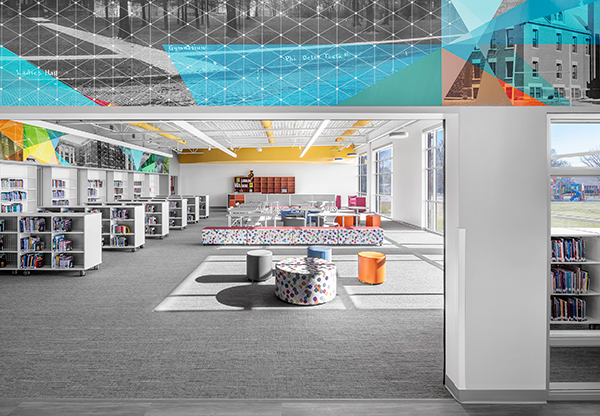
A key part of the design, according to Archibald, was respecting the school’s history. This can be seen in the addition’s cast stone banding and mullion patterns. Additionally, older photos of the original school are incorporated into the wall graphics within the cafeteria and media center.
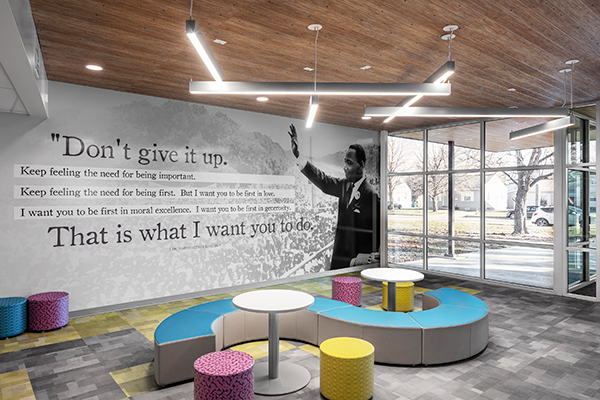
King Elementary School: Strong as Steele
Additions (19,000 square feet) and renovations (40,000 square feet) prepare King Elementary School (K-4) to welcome more students as part of the districtwide consolidation. It also brings King up to speed with Steele Elementary, which had renovations six years ago.
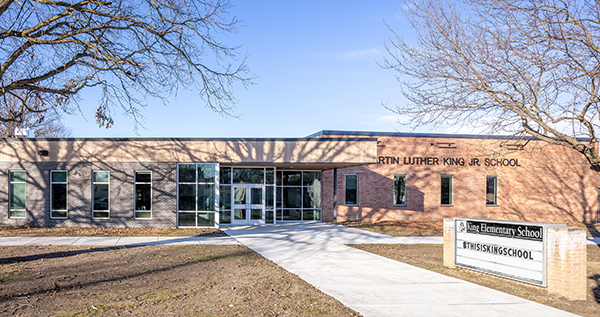
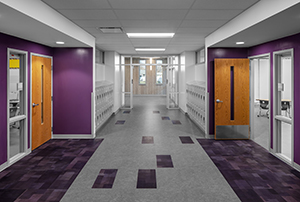
An entry expansion to the front of the facility allows relocation of the main office from the center of the building to the front. This not only brings administration and nursing staff more space, but also creates a safer, more controlled entry.
A second addition includes a new gym, event entry/lobby, and classrooms for kindergarten and third grade.
Renovations cover the entire building from floor to roof. They range from all new mechanical systems and a new roof to cosmetic upgrades like new furniture and paint. A large playground with modern equipment replaces several smaller playgrounds with equipment added over the last 30 years.
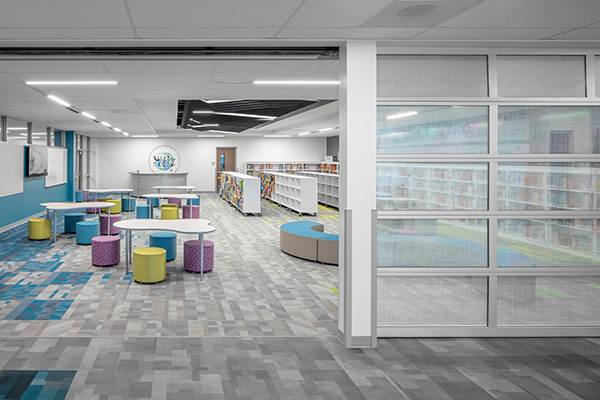
An expanded media center enables the school to serve more students. Its two glass overhead doors open to the entry lobby to create more space for larger functions.
One of the biggest improvements, according to Archibald, is enhanced wayfinding, or the ability for students to navigate the spaces. Designers achieved this by bringing a distinct color to each “pod” of classrooms.
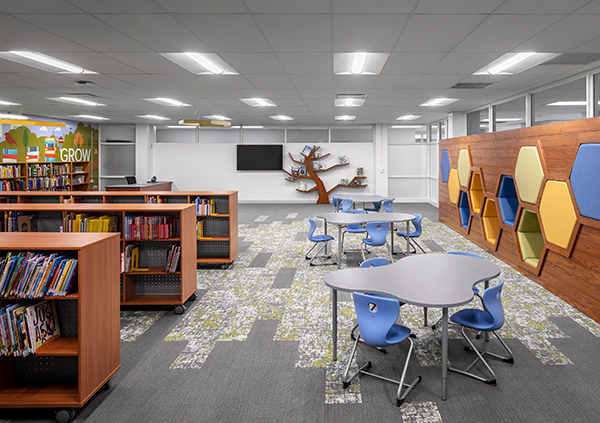
Steele Elementary School: Fun with Hexagons
Due to its more recent upgrades, Steele Elementary School (K-4) underwent fewer changes. A 14,000-square-foot addition includes kindergarten, second grade, and life skills classrooms, as well as a playground expansion. Five thousand square feet in interior makeovers focus on expanding the media center to serve more students. It offers new finishes and movable furniture, plus adds a feature wall with hexagon cubbies that students can climb into.
Contact us to learn more about educational design or comment below to share your thoughts on this post.


